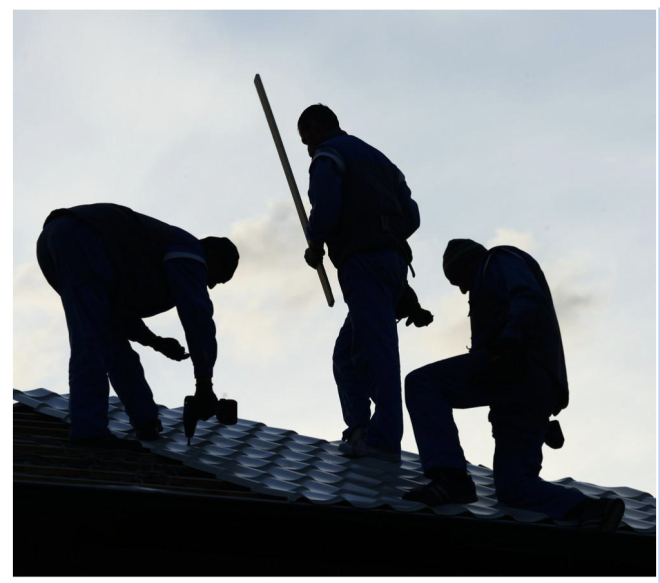- Change theme
America’s Roofing Landscape: Trends, Lifespans, and Why Asphalt Shingles Dominate the Market

In the ever-evolving world of home improvement, roofing stands as a fundamental yet profoundly impactful component.
02:46 31 May 2025
In the ever-evolving world of home improvement, roofing stands as a fundamental yet profoundly impactful component. Roofing practices and preferences in America are shaped by a variety of factors including climate, cost, and material longevity. With 96,474 roofing contractor businesses active across the nation, according to IBISWorld as of 2023, the roofing industry is vast and diverse. These businesses cater to a wide array of customer needs, offering everything from cutting-edge technological advancements to traditional roofing methods. Understanding the trends within this market can provide homeowners with critical insights into making economically and environmentally sound decisions.
Historically, roofing trends in America have evolved parallel to advancements in building technologies and environmental considerations. The choice of roofing materials has a significant impact on a home's energy efficiency, durability, and aesthetic appeal. Homeowners today have a plethora of options ranging from classic asphalt shingles to eco-friendly green roofs. Modern roofing not only serves a functional purpose but also contributes to a home's architectural statement. This article explores the current trends, lifespans of different roofing systems, and the dominance of asphalt shingles in America’s roofing landscape.
Trends in the Roofing Industry
The roofing industry is currently witnessing a trend towards sustainability, driven by the increasing environmental consciousness among homeowners. Green roofs and cool roofing systems are gaining popularity as viable eco-friendly alternatives. Not only do they reduce the carbon footprint, but they also promote energy efficiency by reducing heat absorption. According to industry experts, these sustainable roofing solutions can play a critical role in reducing energy costs, making them an attractive option for environmentally conscious consumers. As awareness grows, more homeowners are expected to lean towards these earth-friendly roofing solutions, further shifting industry trends.
Technological advancements also play a significant role in shaping roofing trends. The development of durable, weather-resistant materials that necessitate minimal maintenance has been a game-changer in the industry. Smart roofing technologies are now emerging, offering features like solar integration and sensor-driven maintenance alerts. These innovations provide homeowners with enhanced functionality and long-term cost savings. With continuous progress in technology, the roofing industry is poised for even more groundbreaking developments in the coming years.
Lifespans of Common Roofing Materials
Understanding the lifespan of different roofing materials is crucial for homeowners when planning long-term investments in their properties. A roof isn't just a standard home feature; it's a crucial barrier that safeguards against environmental factors. According to Roofer's Guild, while the typical roof lifespan spans 25 to 50 years, this range can vary significantly based on material type and property specifics. For instance, metal roofing systems are renowned for their extraordinary durability, with a potential lifespan of up to 75 years, making them a long-term investment for homes subjected to harsh weather conditions. In contrast, rubber roofing solutions offer a maximum lifespan of about 50 years, still providing decades of reliable roof performance.
Asphalt shingles, despite being one of the most common roofing materials, often have a shorter lifespan in comparison to metal or tile options. Their distinct advantage lies in their affordability and ease of installation, which appeals to cost-conscious homeowners. This accessibility, coupled with advancements in material technology, has extended the average lifespan of asphalt shingles, making them a popular choice in residential re-roofing projects. Factors such as climate, maintenance, and installation quality significantly influence the actual lifespan of any roofing material. Therefore, homeowners should consider these aspects when selecting the appropriate roofing material for their climate zone.
The Dominance of Asphalt Shingles in Re-roofing Projects
Asphalt shingles continue to be the go-to choice for re-roofing projects across America, accounting for more than 80% of such endeavors according to Home Innovation Research Labs. Their dominance is largely due to their cost-effectiveness, ease of installation, and versatility in design. Homeowners looking to refresh their property's look with minimal financial outlay find asphalt shingles to be an attractive option. Despite the shorter lifespan compared to other materials, the ability to replace sections without major expense appeals to many. This widespread use has solidified asphalt shingles as the preferred choice for American homeowners seeking both functionality and affordability.
